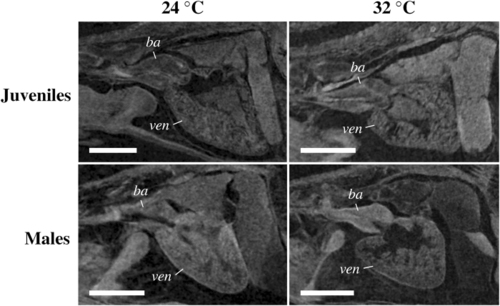- Title
-
Developmental temperature has persistent, sexually dimorphic effects on zebrafish cardiac anatomy
- Authors
- Dimitriadi, A., Beis, D., Arvanitidis, C., Adriaens, D., Koumoundouros, G.
- Source
- Full text @ Sci. Rep.
|
Multiple views from a single scan of an adult zebrafish. ( |
|
Representative primary images showing the comparatively more round ventricle in juvenile and male zebrafish reared at 32 °C developmental temperature (TD). Scale bars equal to 0.25 (juveniles) or 1.0 mm (males). ba, bulbus arteriosus. ven, ventricle. |


